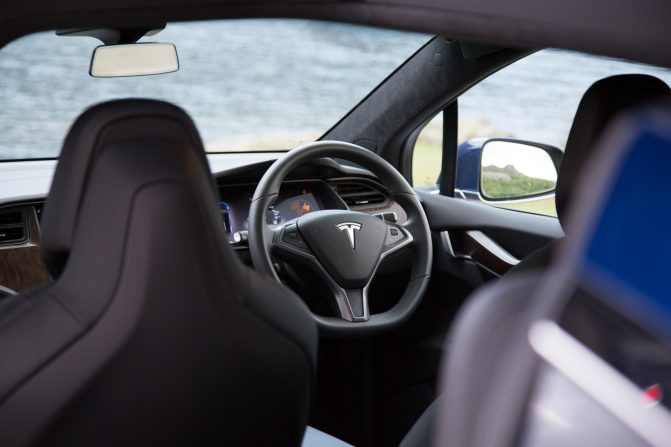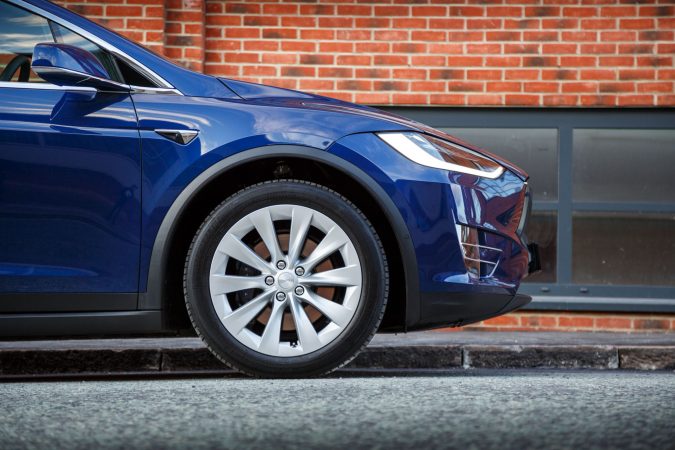Over the past decade, self-driving cars have evolved from sci-fi concepts to real-world technology. Each and every year we see massive improvements in self-driving systems. However, we also see a lot of news stories and videos on social media of what can happen when things go wrong.
With a global push for smarter technology and electric cars, people are concerned about whether or not these cars are safer than normal human-driven cars, or if they are safe at all. This is especially true when misleading terms such as “auto-pilot” being used in various marketing campaigns.
Researchers and scientists believe that self-driving cars are the future, and when the systems are perfected and trained, will make the roads much safer for the average Joe. In order for that to happen, mass adoption will need to occur, public opinion needs to improve and the companies that are promising us this technology, need to live up to their promises.
Advantages of a Self-Driving Car
On paper, the advantages that a self-driving car could provide are endless.
Reducing Crashed Due to Human Error
It’s a well-known statistic that nearly 95% of road accidents can be traced back to human drivers. The cause of this issue lies in our human nature. When we are stressed or tired, we can be easily distracted, make mistakes, and sometimes, pose risks on the road.
When drivers are under the influence or distracted, they pose a serious risk to other drivers. Unfortunately, this applies to autonomous car systems too. In research carried out by IDTechEx, only 1% of all accidents that happened to their autonomous cars, happened because of problems with the technology. A staggering 99% of problems were caused by the unpredictability of human drivers nearby.
Autonomous systems will reduce the unpredictability of human drivers, and this will make it even easier for other autonomous systems to predict, and avoid serious collisions and accidents.
Empowering the Elderly and Disabled
Self driving cars bring the promise of freedom and independence to all groups that may need assistance to drive, such as the elderly population or those with a disability that makes driving difficult.
Self-driving cars also reduce the stress, focus, and reflexes required for conventional driving. This may help those who find driving a stressful ordeal.
Dramatic Reduction in Accidents and Fatalities
One of the strongest arguments used by those in favor of autonomous vehicles is their potential to significantly reduce car accidents and fatalities on the roads. If we eliminate the element of human error, U.S. roads will arguably see a drastic decline in the number of accidents, making roads safer for everyone.
Eliminating Road Rage from our Streets
Self-driving cars do not engage in the human behavior that often causes accidents, such as road rage, tailgating, speeding, or overtaking. Ask any skilled car accident attorney about their cases, and they will tell you that these behaviors are often the reason why their clients have been involved in crashes through no fault of their own.
Driving Efficiency to New Heights
Even the most proficient drivers can occasionally fumble a parallel park. However, autonomous vehicles come with numerous features, including automatic parking, which not only ensures precision but also saves users valuable time, allowing them to focus on other essential tasks with peace of mind.
Challenges and Concerns with Self-Driving Cars
Reliability and Computer Failures
While we envision a future dominated by self-driving vehicles, it’s essential to recognize their potential shortcomings. Computers, which are the brainpower behind autonomous cars, are not infallible. They occasionally experience crashes or malfunctions. While a computer malfunction might be a minor inconvenience in an office setting, it could have severe, even life-threatening, implications on a bustling highway.
Diminishing Human Driving Skills
There’s a common saying that once you master the art of driving, you’ll always retain that skill, much like riding a bike. However, with autonomous vehicles taking the front seat, drivers might find fewer opportunities to hone their driving skills. Over time, this can lead to atrophy of those skills. This presents a challenge if, for some reason, the vehicle requires human intervention in emergencies. In such scenarios, the driver’s response time and acuity might not be at their best due to their dwindling proficiency.
Cybersecurity Threats
As with all internet-connected devices, autonomous vehicles are susceptible to cyber threats. The very technology that allows these cars to communicate and operate efficiently can be exploited by malicious hackers. They could potentially seize control of a vehicle remotely or access private data, posing severe safety and privacy risks.
Technological Glitches Leading to Accidents
While much of the discourse around self-driving cars revolves around their ability to reduce human-error accidents, they are not immune to causing mishaps of their own. Technical malfunctions, such as incorrect software updates or system glitches, might lead to unforeseen accidents on the road.
Integration into Modern Life
While the technology behind autonomous vehicles advances rapidly, the broader acceptance of these cars – both socially and legally – has yet to catch up. We must consider how they will integrate into our societal framework, understanding both their potential benefits and risks.
Are Self-driving Cars Safe in Their Current Iteration?
The safety of self-driving cars is a topic of intense debate, especially as they transition from novelty to a more mainstream presence on our roads. Evaluating their current safety involves looking at both their technological maturity and the real-world data concerning their performance.
From a technological standpoint, self-driving cars leverage a suite of advanced sensors, including LIDAR, cameras, and radar, to perceive their surroundings. Combined with sophisticated machine learning algorithms, they can interpret traffic situations, predict the actions of other road users, and react accordingly. In ideal conditions, these systems can outperform human drivers in terms of reaction time and consistency. They don’t suffer from fatigue, distraction, or impaired judgment due to substances or emotions.
However, the real-world implementation of this technology is not without challenges. There have been reported incidents involving autonomous vehicles, some resulting in fatalities. In many of these cases, the car’s systems failed to interpret complex or unusual traffic situations correctly. Moreover, interactions with human drivers, who often act unpredictably, add another layer of complexity.
Another aspect to consider is the relative novelty of the technology. Traditional vehicles have had over a century’s worth of development, refinements, and safety evaluations. In contrast, autonomous vehicles are still in their nascent stages, with significant ongoing development and much shorter testing periods.
A comparison based on miles driven suggests that self-driving cars have a higher safety record than human-driven ones. Still, critics argue that the environments in which these miles are accumulated, often under ideal or controlled conditions, don’t provide a holistic view of their safety.
In conclusion, while self-driving cars in their current iteration show immense promise and have demonstrated safety competencies in numerous scenarios, they aren’t entirely infallible. As the technology continues to evolve, it’s likely we’ll see improvements in their safety record. But for now, a cautious approach, with a combination of human oversight and automation, may be the most prudent path forward.



